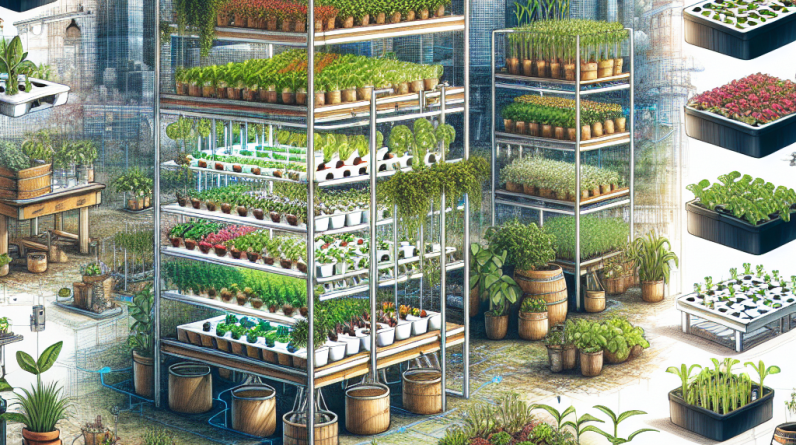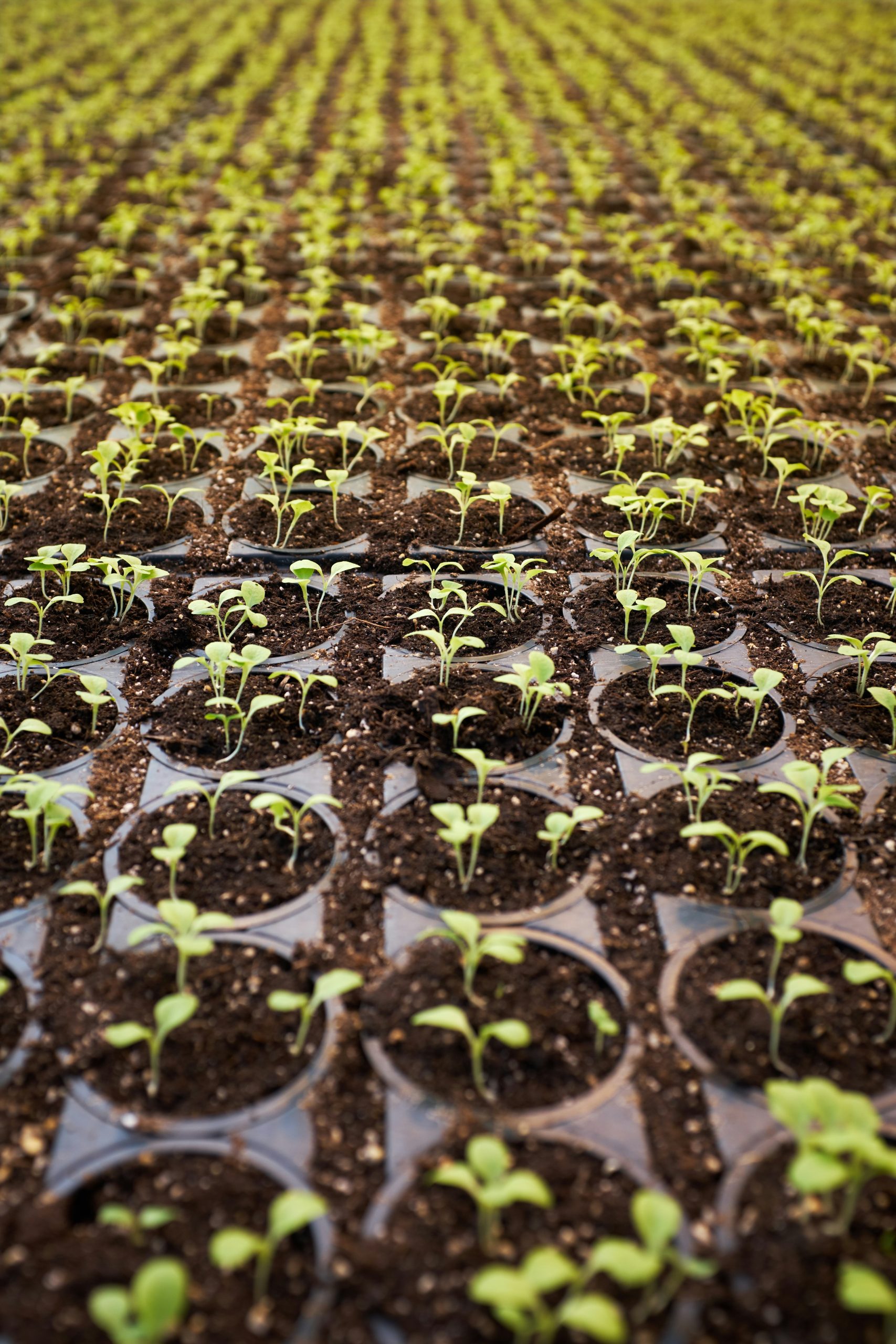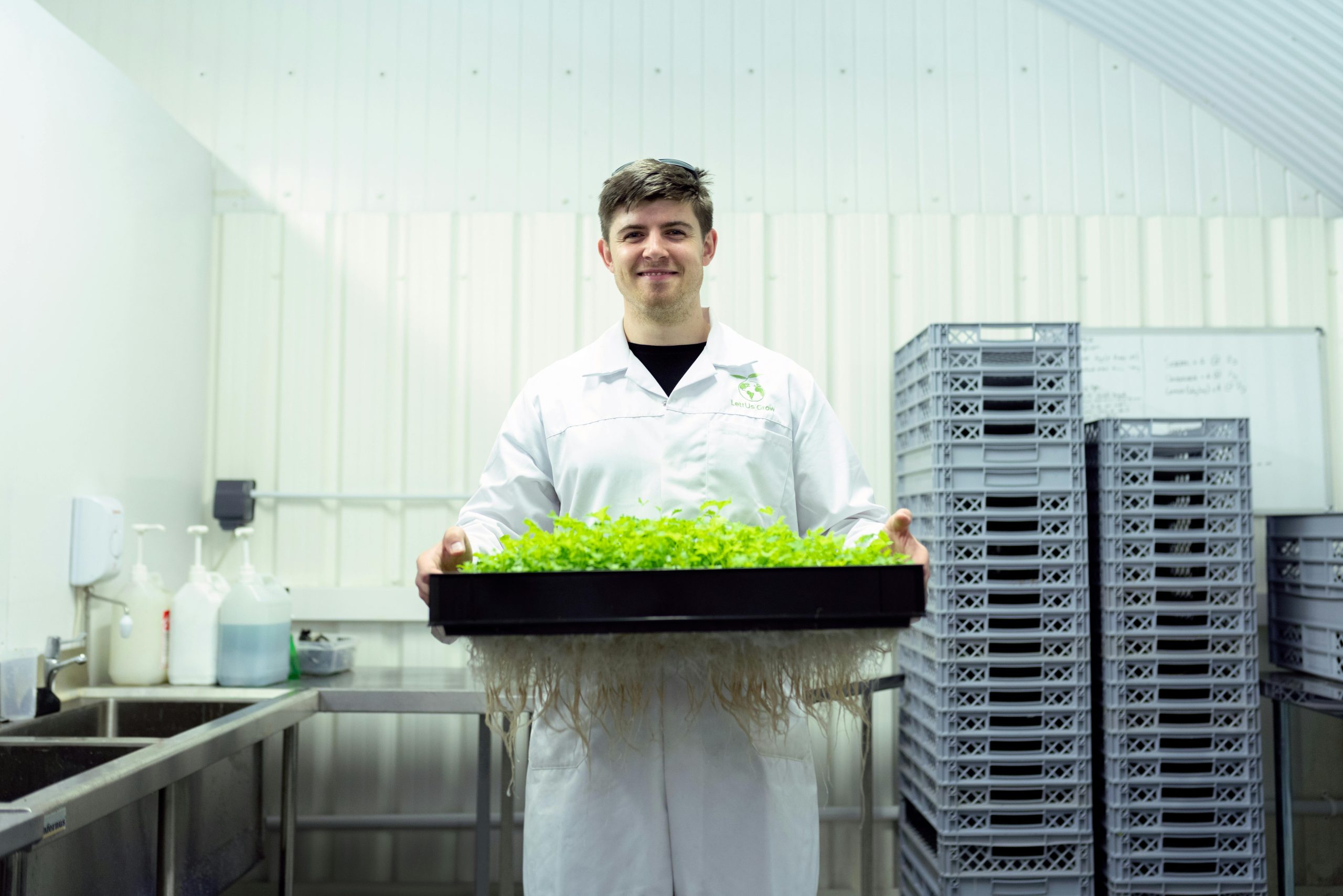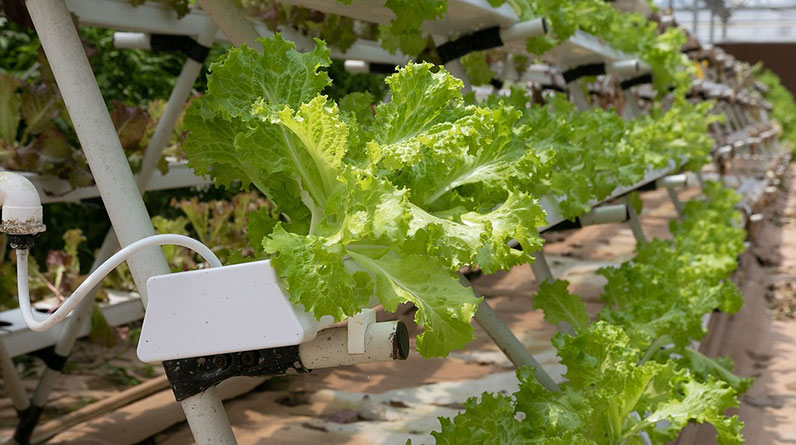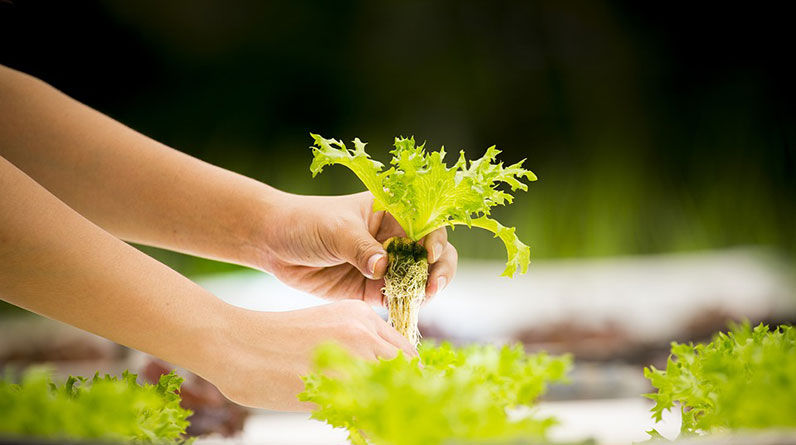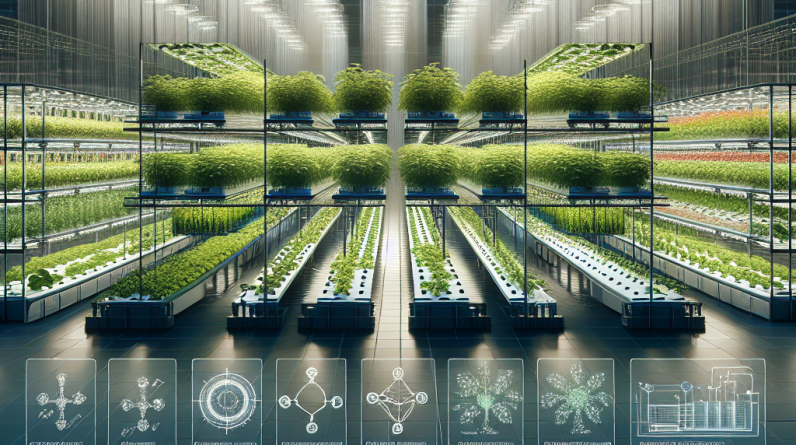
Table of Contents
- Introduction to Hydroponic Strawberry Setup
- 1. Choosing the Right Hydroponic System
- 2. Selecting Optimal Growing Mediums
- 3. Maintaining pH and Nutrient Levels
- 4. Ensuring Proper Lighting Conditions
- 5. Proper Temperature and Humidity Control
- 6. Pest and Disease Management
- 7. Harvesting and Post-Harvest Care
- Conclusion
- Frequently Asked Questions
Introduction to Hydroponic Strawberry Setup
Embarking on a hydroponic strawberry setup in 2025 offers an innovative way to grow delicious, healthy strawberries indoors or in limited outdoor spaces. Unlike traditional soil cultivation, hydroponics involves growing strawberries in nutrient-rich water solutions. This method enhances growth rates, yields, and fruit quality, making it a popular choice among hobbyists and commercial growers alike.
In this comprehensive guide, Iâll walk you through 7 effective strategies for establishing a successful hydroponic strawberry setup in 2025. Whether you’re a seasoned gardener or just starting, these tips will help you optimize your system for maximum productivity.
From selecting the ideal hydroponic system to pest control, I will cover everything you need to know to thrive in your strawberry farming journey. Ready to get started? Letâs dive into the first strategy.
1. Choosing the Right Hydroponic System
Types of Hydroponic Systems Suitable for Strawberries
There are several hydroponic systems that work well for strawberry cultivation, including Nutrient Film Technique (NFT), Deep Water Culture (DWC), and Ebb and Flow (Flood & Drain). In 2025, the trend leans towards NFT and DWC because they promote excellent oxygenation and nutrient availability.
For example, NFT systems with gentle water flows ensure the roots receive oxygen and nutrients continuously, which is crucial for strawberry development. Similarly, DWC setups, where roots grow in aerated nutrient-rich water, have gained popularity for their simplicity and high yield potential.
When selecting your hydroponic system, consider the space you have, your budget, and your level of experience. DIY setups are also a viable option for enthusiasts looking to customize their environment.
Pros and Cons of Popular Hydroponic Systems
Understanding the benefits and drawbacks of each system can help you make an informed decision. NFT systems are space-efficient and cost-effective but require constant monitoring of water flow. DWC offers vigorous growth but may need routine aeration adjustments. Ebb and Flow systems are versatile but involve more complex setup procedures.
In 2025, innovative systems like aeroponics are also emerging, promising even greater growth rates. However, they require higher technical skills and maintenance.
Choosing the right hydroponic system is the foundation of a successful hydroponic strawberry setup. Invest time in researching and selecting a setup that matches your goals and resources.
2. Selecting Optimal Growing Mediums
Best Media for Hydroponic Strawberries
In 2025, growers are shifting towards inert, pH-neutral mediums such as Coconut Coir, Rockwool, and perlite. These media provide excellent aeration and moisture retention, which are vital for strawberry roots.
Coconut Coir is sustainable and offers good water retention, making it a popular choice. Rockwool provides superior stability and drainage but must be handled carefully due to its fiber content.
Using high-quality mediums ensures your strawberries develop strong root systems and proper nutrient uptake. Avoid media that decompose or harbor pathogens, as they can undermine your entire system.
Preparation and Maintenance of Growing Media
Proper preparation, such as soaking or flushing the media before planting, improves initial germination and growth. Regular monitoring and replacement of media are recommended as they can become compacted or contaminated over time.
In 2025, eco-friendly options like recycled coconut fiber are gaining traction, aligning with sustainable farming trends. Clean, sterile media are essential to prevent disease outbreaks in your hydroponic strawberry setup.
Implementing a media replacement schedule based on plant performance will keep your system healthy and productive.
3. Maintaining pH and Nutrient Levels
Optimal pH Range for Strawberries
Strawberries thrive best in a pH range of 5.5 to 6.5. In 2025, precision pH monitoring tools are more affordable and accurate, allowing growers to fine-tune their solutions effortlessly.
Maintaining proper pH levels ensures nutrient availability, which directly impacts fruit quality and yield. Regular testingâat least twice a weekâis essential to prevent pH fluctuations.
If pH drifts out of range, plants may exhibit deficiencies or nutrient lockout. Consistent adjustment using pH Up or Down solutions keeps your hydroponic strawberry setup stable and productive.
Nutrient Solutions and Supplementation
A balanced hydroponic nutrient mix rich in nitrogen, phosphorus, potassium, and trace elements supports vigorous strawberry growth. In 2025, specialized strawberry nutrient formulations are available, tailored for different growth stages.
Regularly dosing your system with these nutrients, based on manufacturer guidelines and plant needs, will maximize sweetness and size of your strawberries. Periodic flushing and testing of nutrient levels prevent imbalances.
Incorporating some organic supplements like liquid seaweed or fish emulsion can boost plant resilience and flavor, aligning with organic trends in 2025.
4. Ensuring Proper Lighting Conditions
Lighting Needs for Indoor Hydroponic Strawberry Setup
Strawberries require at least 8-12 hours of full-spectrum light daily for optimal growth. In 2025, LED grow lights have become the standard, offering energy efficiency and customizable spectrums.
Positioning and intensity are keyâlights should be placed around 12-18 inches above the plants, ensuring uniform distribution. Dimmable LED panels give growers flexibility to adjust as plants mature.
Using automated timers and smart controls minimizes human error, ensuring your hydroponic strawberry setup receives consistent light exposure for continuous growth.
Maximizing Light Efficiency
Reflective surfaces like Mylar or white paint can increase light distribution, reducing the need for additional fixtures. Supplementing natural light with grow lights can accelerate growth cycles, especially in less sunny climates.
In 2025, smart lighting systems integrate with environmental controls, enabling growers to simulate ideal day/night cycles, ultimately improving yield and berry quality.
Consistent lighting management is crucialâany irregularities can cause stress and affect fruit development.
5. Proper Temperature and Humidity Control
Ideal Climate Conditions for Hydroponic Strawberries
Strawberries excel in temperatures between 60-75°F (15-24°C). Maintaining consistent temperature ranges promotes flowering and berry development. In 2025, automated climate control systems have made environmental regulation more accessible for home and commercial growers.
High humidity levels above 80% can lead to fungal diseases, so proper ventilation is essential. Conversely, low humidity can cause plant stress and poor fruit set.
Monitoring tools like digital hygrometers and thermostats help maintain stability, ensuring your hydroponic strawberry setup stays within optimal thresholds.
Strategies for Climate Management
Using exhaust fans, dehumidifiers, and supplemental heating or cooling devices, you can create a controlled environment ideal for strawberries. Smart sensors connected to IoT devices facilitate real-time adjustments, a trend that grew rapidly in 2025 tech innovations.
Incorporating shade cloths or curtains during peak sunlight hours prevents overheating, safeguarding your crop from stress. Consistent climate monitoring reduces crop loss and enhances fruit quality.
A well-regulated environment reduces disease susceptibility, ensuring healthier plants and better yields.
6. Pest and Disease Management
Common Pests in Hydroponic Strawberry Systems
Though hydroponic setups reduce soil pests, issues like spider mites, aphids, and whiteflies can still occur. Regular inspection and biological controls like ladybugs or predatory mites are effective and environmentally friendly options in 2025.
Encouraging beneficial insects and using neem oil for organic pest control helps keep infestations at bay. Quarantining new plants before adding them to your system prevents introducing pests.
Consistent monitoring and early detection are key to preventing major problems from developing in your hydroponic strawberry setup.
Preventing and Managing Diseases
Fungal diseases like powdery mildew and gray mold thrive in humid conditions. Proper ventilation, humidity control, and sanitized equipment are vital measures. Regular cleaning of reservoirs and tools minimizes pathogen spread.
In 2025, disease-resistant strawberry cultivars have become more accessible, reducing the need for chemical treatments. Organic fungicides can also be part of your management plan.
Early intervention prevents large-scale crop loss, keeping your hydroponic strawberry setup healthy and productive.
7. Harvesting and Post-Harvest Care
Timing and Techniques for Harvesting Strawberries
Strawberries are best harvested when fully ripeâbright red and firm. In 2025, technological advancements like color sensors can help determine perfect ripeness, ensuring you pick at peak flavor.
Use clean scissors or pruning shears to avoid damaging the plant. Daily harvesting during peak season maximizes yield and freshness.
Proper handling minimizes bruising, which extends shelf life and keeps your market or personal consumption at its best.
Post-Harvest Storage and Marketing
Store strawberries in a cool, humid environment to prolong freshnessâideally at 32°F (0°C) with high humidity. Using modified atmosphere packaging is an emerging trend in 2025 for extending shelf life.
Highlighting your hydroponic strawberry setup’s sustainability and quality can attract eco-conscious consumers. Sharing your journey online and participating in local farmers’ markets boosts visibility.
Fresh, high-quality strawberries from your hydroponic system can often command premium prices, especially when marketed as organic or sustainably grown.
Conclusion
In 2025, mastering the art of a successful hydroponic strawberry setup involves strategic planning, precise environmental control, and continuous learning. From selecting the right system and mediums to managing pests and harvesting, each strategy plays a vital role in your success.
If you’re passionate about growing strawberries all year round or in limited space, adopting the 7 effective strategies outlined above will set you on the path to a plentiful and high-quality harvest. Remember, a well-designed hydroponic strawberry setup not only boosts productivity but also contributes to sustainable farming practices.
Now is the perfect time to embrace hydroponics and transform your strawberry cultivation with confidence in 2025!
Frequently Asked Questions
1. What is the best hydroponic system for strawberries in 2025?
Currently, nutrient film technique (NFT) and deep water culture (DWC) are considered the most effective due to their high oxygenation and growth rates. Your choice depends on your space, budget, and experience level.
2. How often should I check and adjust pH levels in my hydroponic strawberry setup?
Itâs recommended to check pH at least twice weekly to prevent imbalances. In 2025, advanced digital testers make this process faster and more accurate, allowing for better crop management.
3. Can I grow strawberries hydroponically indoors?
Absolutely! Indoor hydroponic strawberry setup is ideal for year-round production, especially with proper lighting and climate control. Indoor systems also reduce pests and disease risks.
4. How do I maximize yield in my hydroponic strawberry setup?
Optimal environmental conditions, proper nutrient management, and regular pruning are key. Using technology like automated lighting and climate controls in 2025 greatly enhances yields.
5. What are common pests in hydroponic strawberry systems, and how can I manage them?
Spider mites, aphids, and whiteflies are common. Biological controls, organic pesticides, and regular inspection are effective management strategies.


